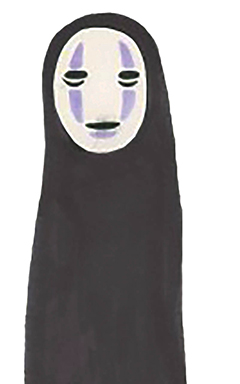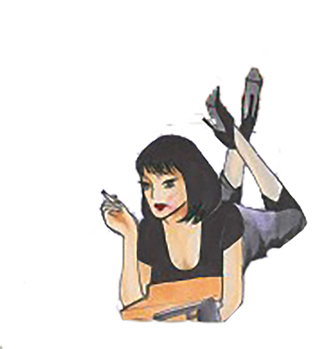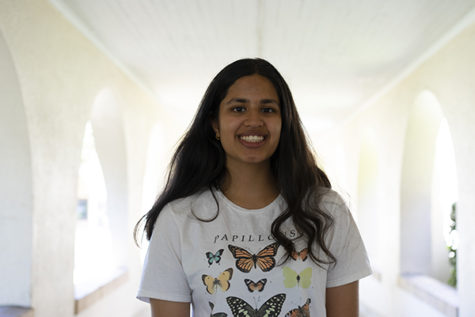Contemporary Classics
Film is proof that great art can come from anywhere: a story told out of order, a magical bathhouse, a quirky pregnancy story, and a likable office worker. There are thousands of great films, but these four are a good start.
American Beauty

“American Beauty’ is pretty much the perfect screenplay. Every character is a variation on the team of appearance vs. true self,” a senior at Paly, Max Rosenblum, said. “American Beauty” is a mediation on the struggles of suburban life. As the main character, Lester Burnham, starts to become attracted to his daughter’s friend and begins to realize his actions are upsetting the world around him. Viewers watch as the other characters change in their own unpredictable ways as the film unfolds. “The surreal sequences get you into his head really effectively. I can see myself in all of these characters, which is impressive because on paper these people are nothing like me,” Rosenblum said. The real feat that “Beauty” achieves is that it’s entirely carried by the conflict of the characters: there is no gaudy cinematography or shallow visual effects. The performances and script shoulder the entire film: Spacey already looks like he should be living through a depressed mid-life crisis, and Wes Bentley plays the psychopathic stoner perfectly.
Juno

Upon discovering that she is pregnant, 16 year-old Juno MacGuff must make a life changing decision. She initially plans to have an abortion, but later decides to look into other options. She then proceeds to go to her local convenience store where she sees an ad for a couple who are looking to adopt a child: Mark, a failed punk rockstar and Vanessa, a meticulous businesswoman. Once meeting the seemingly perfect couple, Juno decides to have the child and in a closed adoption. Contradictory to the typical teenage pregnancy trope that such a premise might suggest, “Juno” is far from it. Juno MacGuff, played by the talented Ellen Page, is a quick-witted, sarcastic teen with a spunky attitude, making her a striking enigma on the screen. She is eccentric, with her hamburger shaped telephone and love for Sunny D, sardonic, with a dark sense of humor, and impulsive, doing whatever she wants whenever she wants. Her pregnancy, while a significant time in her life, does not diminish any of these qualities. She makes jokes about her situation and does not let it define her. “I would consider ‘Juno’ to be iconic for the way it portrayed teenage pregnancy in a way that was contrary to other portrayals at the same time. ‘16 and Pregnant’ was from the same era, and it was sort of romanticizing the notion,” Alanna Williamson, an English and Film Composition Literature teacher at Paly, said. “‘Juno’ is more genuine to what the experience is probably like for many young women.” Aside from the pregnancy, “Juno” beautifully captures the title character’s personal growth and teenage experience. You see her struggle to comprehend her feelings for her best friend, Paulie Bleeker—who also happens to be the baby’s father. You see her in her bedroom, listening to The Stooges without a care in the world. Unlike other films within the high school sub-genre, “Juno” tells a realistic story. There are no cliques that run the school and no romanticized storylines of unexpected love. “As a teenager, I felt really understood by the film. The situation is not glorified, and the characters are so normal,” Williamson said. “Juno” presents life in the most simple yet quintessential way. “I would consider ‘Juno’ to be iconic for the way it portrayed teenage pregnancy in a way that was contrary to other portrayals at the same time. ‘16 and Pregnant’ was from the same era, and it was sort of romanticizing the notion,” Alanna Williamson, an English and Film Composition Literature teacher at Paly, said. “‘Juno’ is more genuine to what the experience is probably like for many young women.” Aside from the pregnancy, “Juno” beautifully captures the title character’s personal growth and teenage experience. You see her struggle to comprehend her feelings for her best friend, Paulie Bleeker—who also happens to be the baby’s father. You see her in her bedroom, listening to The Stooges without a care in the world. Unlike other films within the high school sub-genre, “Juno” tells a realistic story. There are no cliques that run the school and no romanticized storylines of unexpected love. “As a teenager, I felt really understood by the film. The situation is not glorified, and the characters are so normal,” Williamson said. “Juno” presents life in the most simple yet quintessential way.
Spirited Away

With the fantasy of magical entities, the perils of defining one’s identity and the courage that comes with having to face the unknown, Japanese director Hayao Myazaki’s anime, “Spirited Away,” provides a visually stunning, yet perfectly chaotic journey through his imagination. “Spirited Away” tells the story of Chihiro, a young girl who stumbles upon an abandoned amusement park with her parents while on the way to their new home. Chihiro meets Haku, a boy with a dragon spirit, who informs her that she is in a town inhabited by dangerous demons and evil spirits. Exploring the area, Chihiro’s parents decide to dine and dash at one of the abandoned restaurants, resulting in them mysteriously turning into pigs. With the help of Haku, Chihiro must navigate her way through this unknown realm in hopes of returning to her world and saving her parents. Unlike other animated films, “Spirited Away” pushes the envelope in that it is both vivid with its artistry and unconventional with its storyline. The characters, from the innocent Chihiro to the vile witch Yubaba, show stark contrasts which are unexpected, making the film that much more striking and compelling. Miyazaki also manages to distort his characters to show the dark and twisted consciousness that lives within them as well as the light, optimistic side, blurring the line between good and bad and instilling a more realistic human quality of being. “It’s one of the most vibrant, entertaining and stunning animations that exist,” Jasmine Venet, a senior at Paly, said.Venet is an avid Miyazaki fan.“If you look at each panel of the film, you’re sure to find something beautiful and bizarre that somehow manages to fit perfectly with one another,” she said. “That’s what I think is so timeless about the film: it’s ability to seamlessly incorporate both the weird and the normal.” “Spirited Away” proves itself to be more than just a film but a unique and invaluable experience for the viewer.

Pulp Fiction

“Pulp Fiction” is iconic filmmaker Quentin Tarantino’s masterclass, which soaks the viewer in a delirious world packed full of meditative and funny dialogue. “[through Pulp Fiction,] Tarantino aims to change the way in which stories are told, especially the way you interweave these stories with blood and violence,” Paly senior, Dylan Duncan, said. “Every character in the movie is so polarizing yet captivating.” Often called “the most quotable movie of all time,”, the release of “Pulp Fiction” in 1994 is now seen as a landmark in cinema history. It made its way onto college dorm posters, Urban Outfitters tee-shirts and into the heart of anyone who appreciates a good film. It tells three stories with three different characters. The first story tracks Vincent Vega, a hitman who just arrived home from Europe. The second is about a famous boxer trying to find his veteran father’s watch. The movie closes with Jules, Vincent’s colleague, being held hostage during a robbery. “Tarantino sets up [even simple] dialogue to have the audience entertained throughout the scene and waiting in anticipation to see what will happen next. To him, it’s too easy to follow a traditional story structure,” Nicolas Diaz, a senior at Paly, said. “‘Pulp Fiction’ became a sensation because of [Tarantino’s unique dialogue] and because of the ambiguity of the briefcase; some people think it’s even Wallace’s soul.” Diaz and Duncan are no strangers to Tarantino’s style: incredibly crafted dialogue said by unique and lovable characters pervade his entire filmography.
Art by: Ellen Chung

Mahati Subramaniam joined C Magazine because of the variety of content that was present, and the interesting designs. Her favorite part of C mag is production...

Paly Junior, Raj Sodhi, joined the publication because he was attracted to the design and subject matter of the articles. He loves the committee of C...






